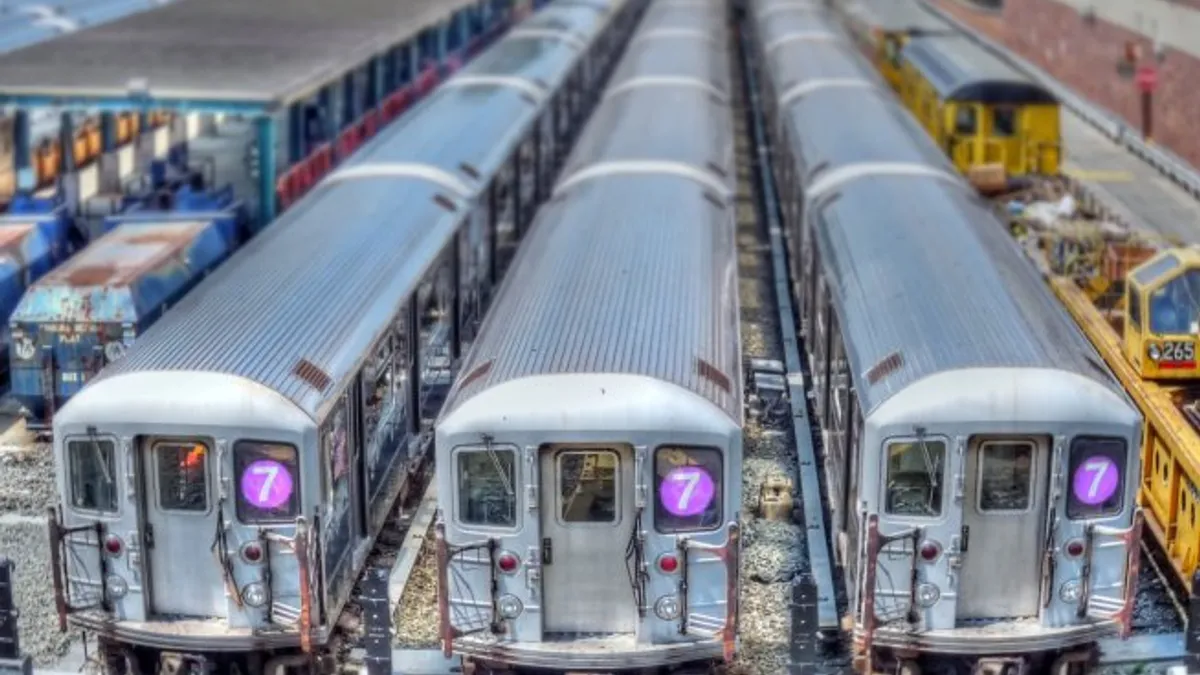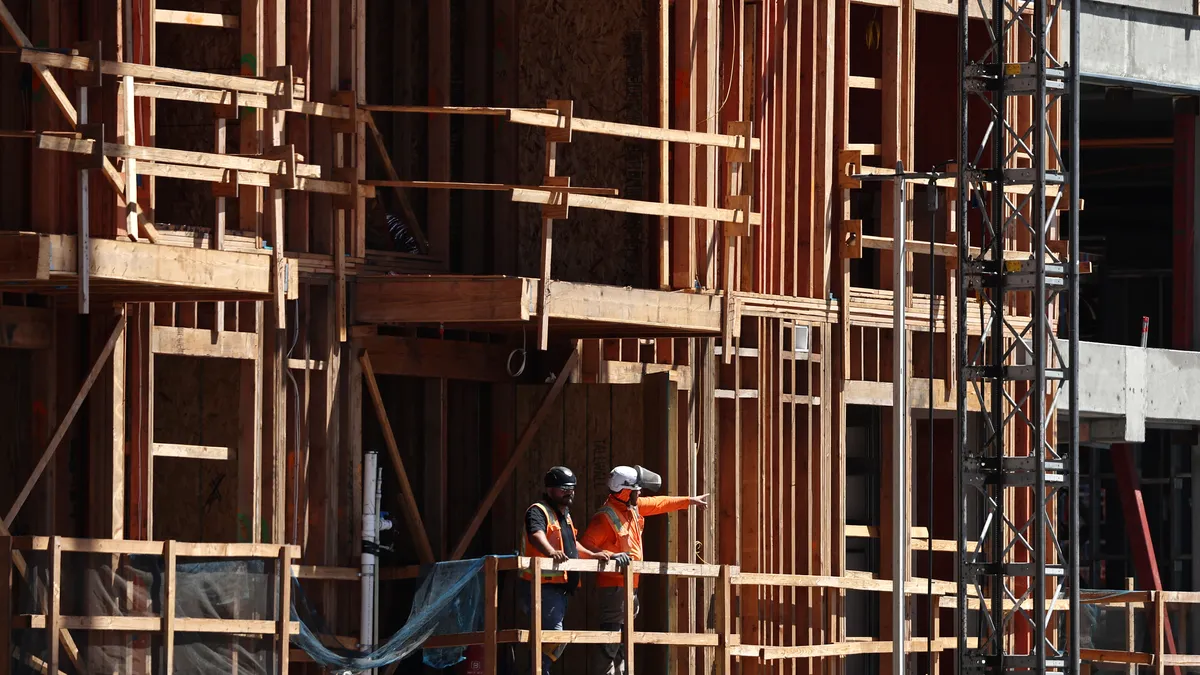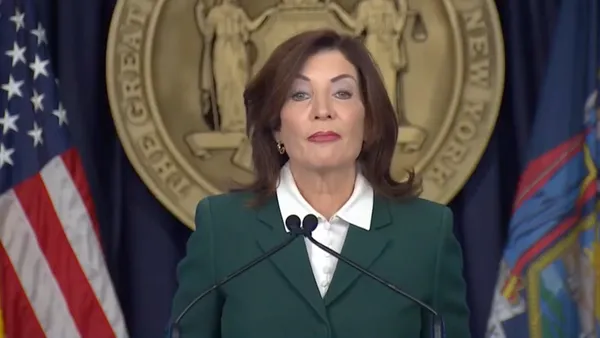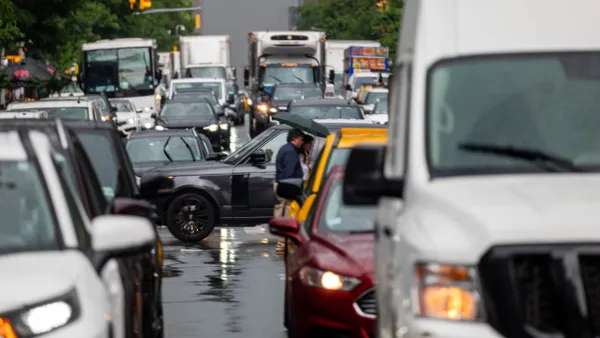Dive Brief:
- New York Transit Authority President Andy Byford released a new plan, dubbed "Fast Forward," to repair and modernize the New York City subway. The plan focuses on the network's glitchy signal system, which would see major upgrades on five lines in the next five years, covering a portion of the system that carries roughly 3 million riders.
- Also in the first five years: 50 stations would see accessibility upgrades, 150 stations would get significant repair work and the system will install 650 new cars and a new fare payment system.
- The plan is a serious acceleration of goals laid out in last summer’s $800 million emergency plan, which had a 50-year time frame for repair goals.
Dive Insight:
The subway has been in a well-publicized state of crisis, prompting an emergency rescue plan last summer that started immediate work on signal upgrades (the lagging system has caused frequent delays and shutdowns). That has carried with it station and line closures, but transit officials said the new plan would not involve significantly more impact on commuters.
Given the long process of reversing the subway’s deterioration, there’s skepticism over how effective the new plan can be. That also depends largely on cost. The New York Times reports that Byford’s plan would cost $19 billion over the first five years, although MTA chairman Joseph Lhota said that cost estimates were not done. The transit authority currently has just $33 billion for the next five years, including costs on commuter railways, tunnels and bridges. A spokesman for Mayor Bill de Blasio told the Times that the city was not inclined to pay for Byford's plan (de Blasio only chipped in for last year’s emergency plan under political pressure).
A spokesman for Governor Andrew Cuomo told ABC7 said the plan needed to be "expeditious and realistic," but also highlighted how the subway would work in a changing future of transportation. "The MTA must bring in the top tech experts in the nation," the spokesman said, "because if we can experiment with self-driving vehicles, there must be an alternative technology for the subway."










